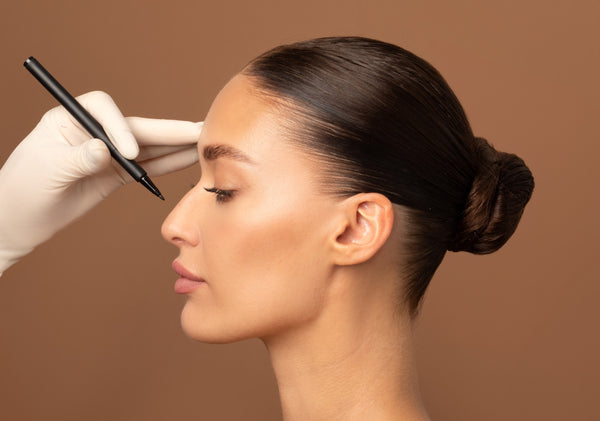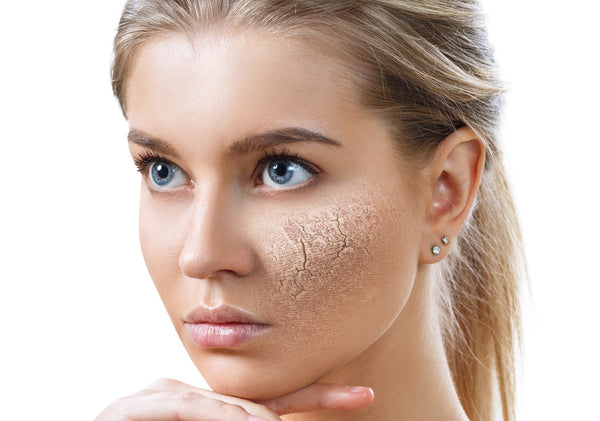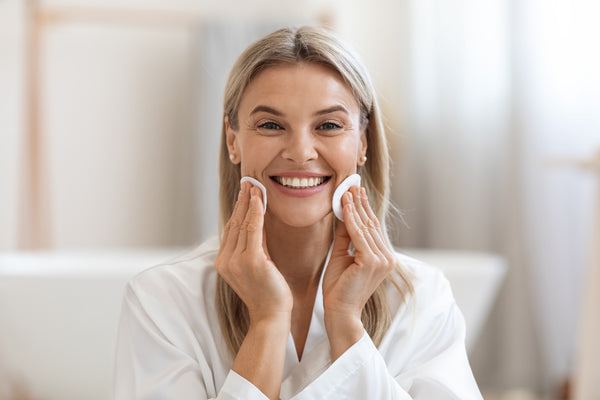Can You Use Hyaluronic Acid & Retinol Together?

Can you use hyaluronic acid with retinol together? Yes, you can — and we’re digging into the best way to reap all of the possible skincare benefits.
Hyaluronic acid and retinol are two of the most talked-about ingredients in the skincare industry, and with good reason: they’re the most powerful anti-aging skin care products that are safe, effective, and suitable for daily use.
Of course, it has been said that everything is better in pairs — but certain types of skincare simply don’t “play” well together when mixed. This has left many skincare enthusiasts with (two) burning questions: Can you use hyaluronic acid with retinol together? And if so, what kind of benefits can you get from doing it?
If you’re looking to turn back time and get that luminous glow in a simple, two-step addition to your skincare routine, we’ve got you covered. We’re going to be answering this question, and showing you how to get the most out of your anti-aging skincare routine in just a few steps.
What is hyaluronic acid?

Hyaluronic acid (HA) is a powerful moisturizer, also known as an emollient. This means that it works double time on your skin with each use, moisturizing from the outside in and penetrating deeper into your skin. It also holds onto water better than other types of molecules, making it especially effective for long-term wear and use.
Additionally, if you have a damaged skin barrier, HA can rejuvenate and soothe your skin, moisturizing and replenishing the dead and dry cells. It also can give you a more naturally supple and glowing complexion, as it’s known to promote soft-tissue growth and prompt the production of key skin compounds: elastin & collagen. With consistent use, it can help to get you a naturally youthful glow and minimize the appearance of blemishes and creases in the skin.
What is retinol?

Retinol in skincare is a synthesized form of vitamin A; a key vitamin that naturally supports your skin’s health and appearance. There are two ways that you can start enjoying the benefits of retinol: via the synthesized form in professionally-formulated skincare products, and naturally in your diet via animal-based meats and dairy products. While both can be helpful, retinol-based skin care formulations are meant for easy uptake through your skin’s natural skin barrier and are usually present in higher concentrations than you would find in your daily diet.
Retinol can be especially helpful in managing inflammation and skin irritation, as well as replenishing a damaged skin barrier. It is fat-soluble, meaning that your body naturally absorbs the product through the skin’s naturally-present oils. It won’t agitate oily skin, either. In fact, it can actually help you to manage your skin’s oil production (known as sebum) and regulate it to healthier levels. This can automatically lead to improved skin texture and reduced instances of acne.
Can you use hyaluronic acid with retinol?
You absolutely can use hyaluronic acid with retinol with no bad effects. For more sensitive skin types, you can actually enjoy additional benefits from tempering the possibly drying and irritating effects of retinol on its own.
Retinol’s main purpose, besides managing your skin’s oil production and overall inflammation level, is to promote healthy cell growth and renewal. As it does this, your old cells will be gently removed from the surface of your skin, which can cause your new skin beneath that layer to be exposed. This can cause irritation, especially in those with more sensitive skin types.
What benefits can I get from mixing hyaluronic acid and retinol?
There are a variety of synergistic benefits from using both of these high-quality skincare tools together. The biggest benefit that you can enjoy is reduced instances of retinol-based skin irritation, which is tempered with the inclusion of hyaluronic acid — offering powerful deep moisturizing and soothing benefits to any affected areas.
After consistent application, you’ll see noticeably minimized fine lines, wrinkles, and blemishes, as well as a more youthful and radiant glow. These two products truly revolutionize your skin’s health from the inside out!
How to use hyaluronic acid and retinol together
Looking to level up your skincare routine with these skin-soothing favorites? Here’s how you can get the most possible benefit out of your next skin prep session.
1. Start with a clean slate
Before doing any sort of additional skin care steps, it’s important to cleanse your skin with a gentle cleanser of your choice. Doing this can help to gently exfoliate any residual dead skin cells, and get rid of any dirt, excess oil, or makeup residue that could clog your pores and make your routine less effective. After you cleanse, be sure to fully dry your skin so that the products can absorb fully.
2. Apply your retinol

To get the most out of your retinol and hyaluronic acid duo, you’ll want to apply your retinol first. That way, the HA will be able to step in and offer the advanced care, support, and moisturization you need to rejuvenate your skin. The best way to start using your retinol is to start with a smaller amount, gently working it into the surface of your skin with your fingers.
Starting small can allow you to see how it will react with your skin type, and minimize the risk of excessive flaking and irritation later. After you’re finished applying, it’s best to let it soak into the skin for at least 20 minutes.
If you’re looking for retinol that can give you that extra burst of a radiant glow, consider the Retinol-C Intense Eye Serum. This product has been specifically formulated to maximize your anti-aging benefits while reducing the appearance of fine lines, under-eye bags, and discoloration through a proprietary vitamin-based formula. It’s the perfect solution for sensitive skin types, or for those looking to upgrade their skin routine in a single, easy step!
3. Apply your hyaluronic acid

After your retinol dries, take a few drops of hyaluronic acid and apply it across your face, being careful to avoid the sensitive under-eye area. Gently massage until your skin feels soft to the touch, and allow to dry for at least 20 minutes, or until completely dry.
Our personal favorite is the Hyaluronic Acid Night C-Complex blend — a sumptuous night cream that will offer you intensely, rejuvenating, and deep-layer moisturization to help to seal in your skin’s radiance and vitality, all night long.
4. Wrap it up with a moisturizer
For an extra layer of skin-plumping benefit, we recommend ending your routine with a touch of your favorite moisturizer. The hyaluronic acid is naturally moisturizing and will help to protect your freshly-exfoliated skin, but an extra cream can go a long way toward sealing the moisture into the skin barrier overnight. Plus, it will also help to prevent environmental buildup (like dust, excess oil, and sloughed-off skin cells) from penetrating your skin’s next layer.
Take your skincare to the next level

Retinol and hyaluronic acid are like a “dynamic duo” for youth, vitality, and a naturally-radiant glow. They’re fantastic skin care products on their own, but they truly are better together — offering synergistic skin benefits that will continue to deliver that radiant, supple glow that you’re looking for.










